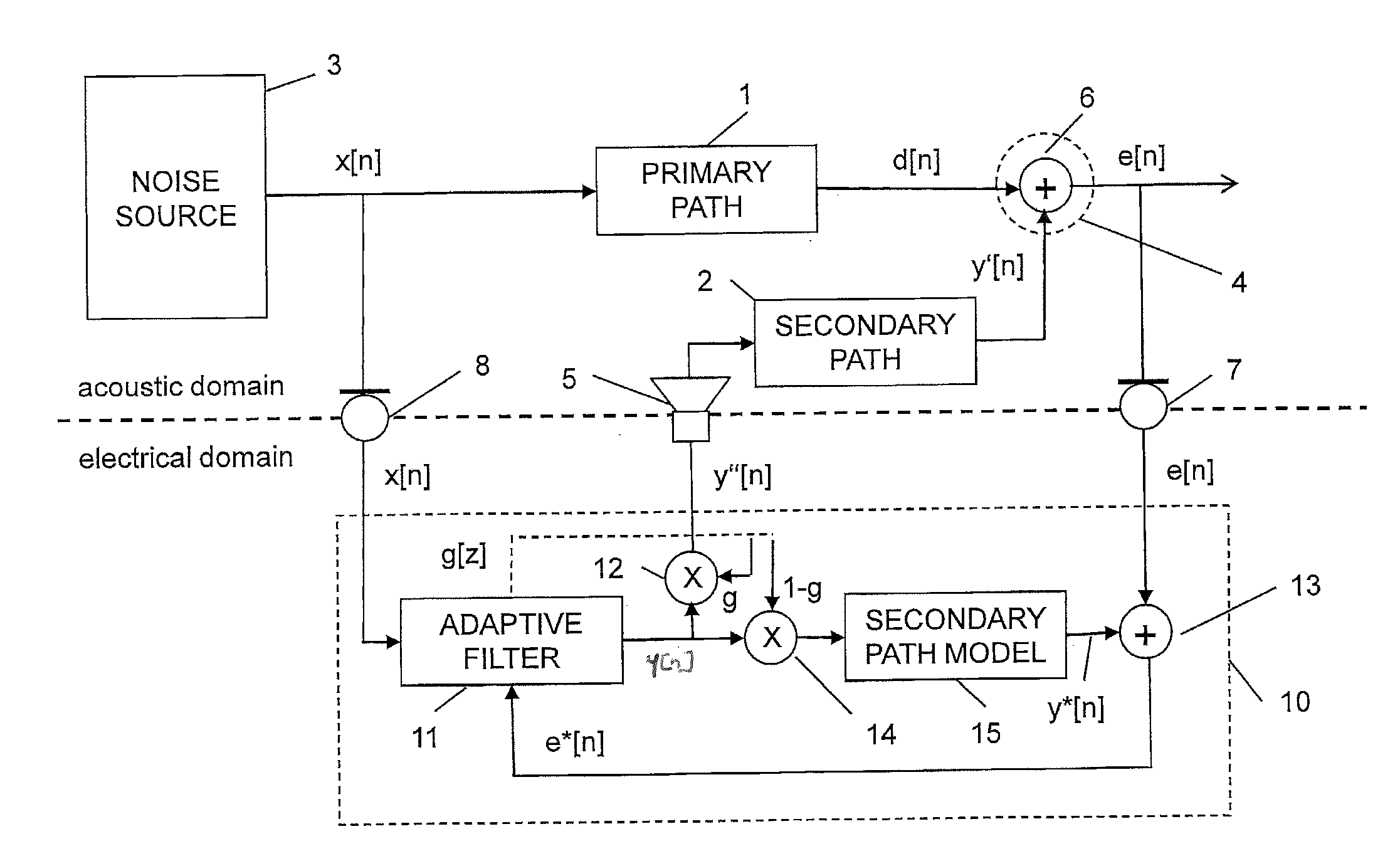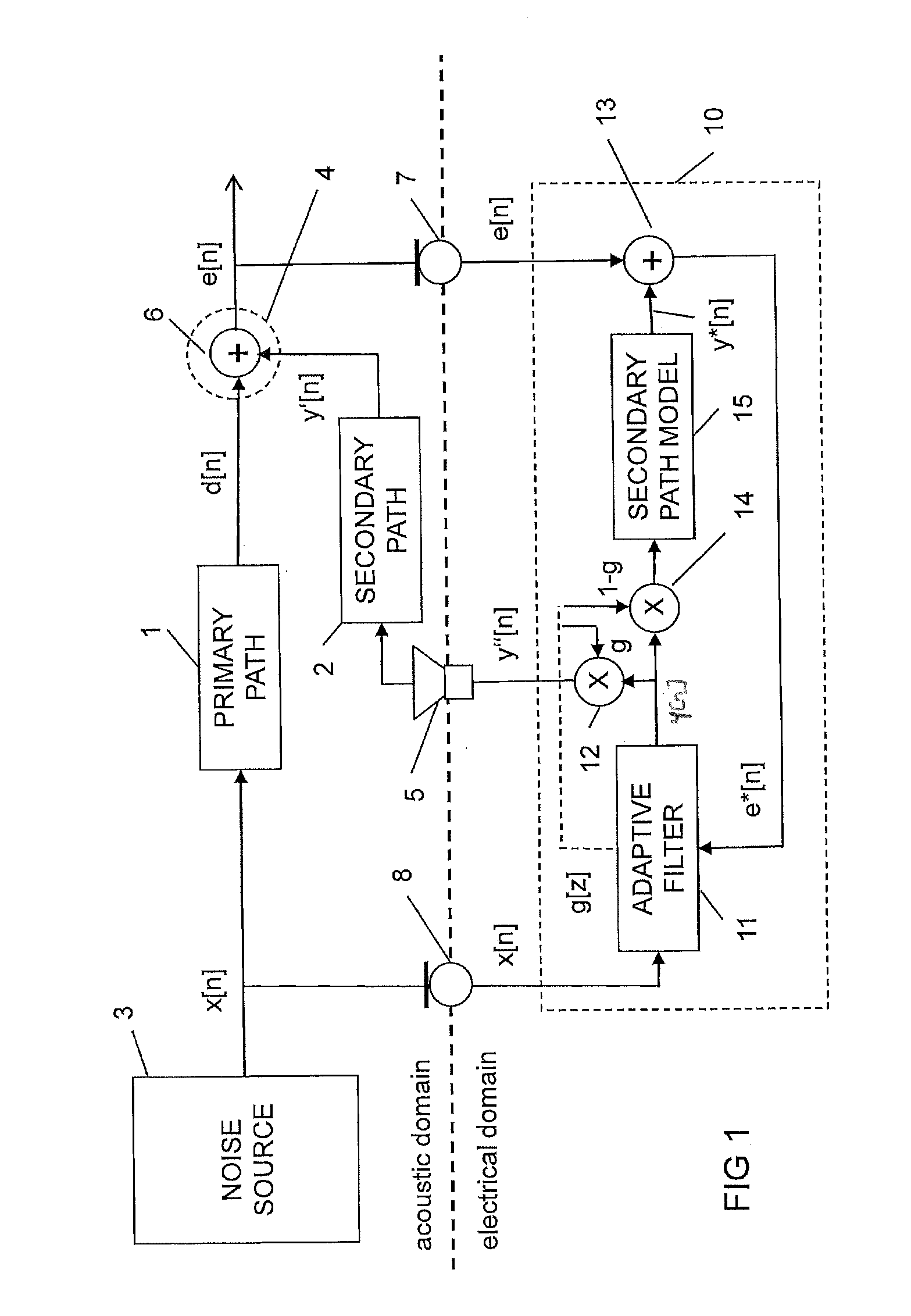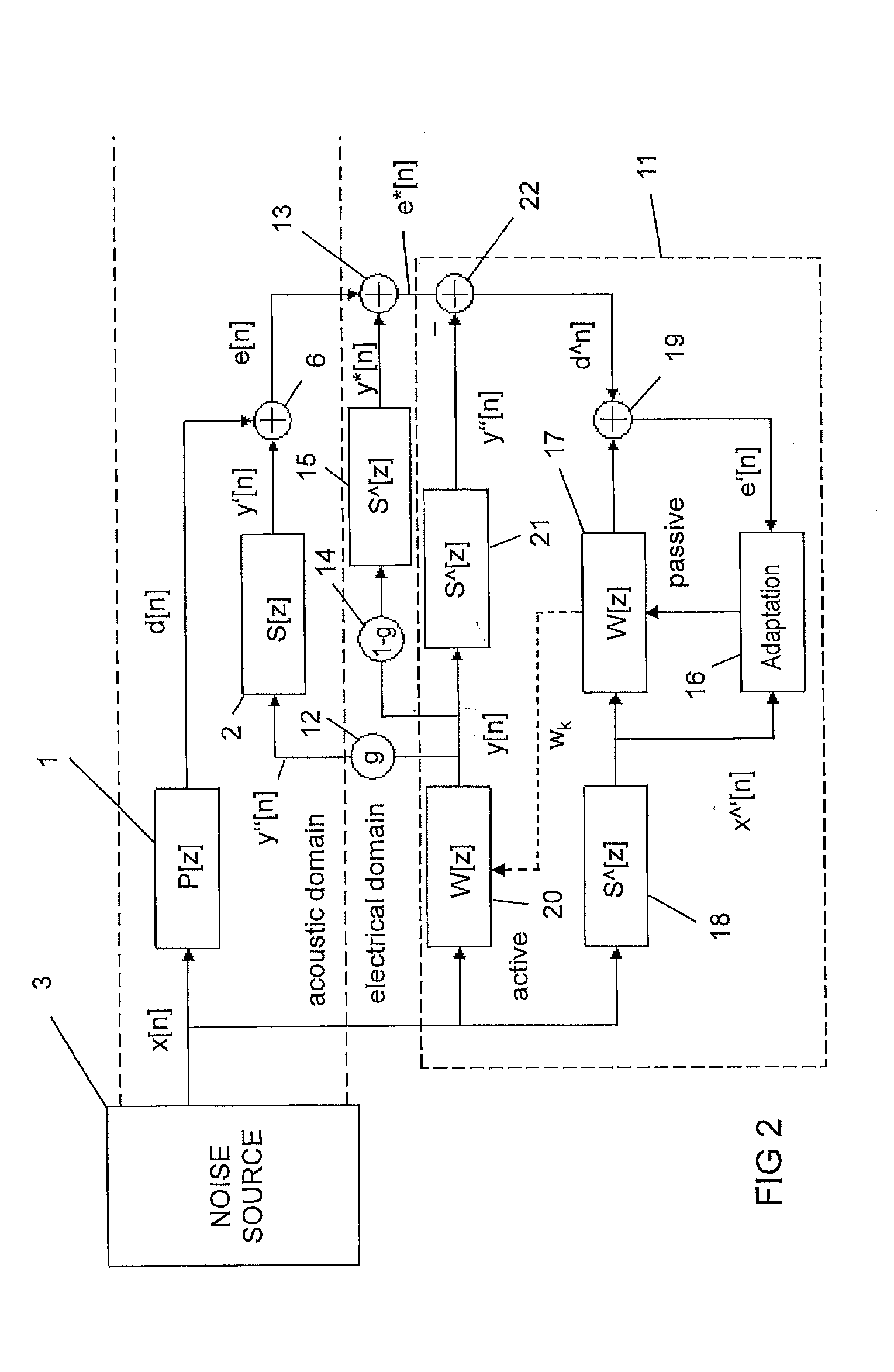Adaptive noise control
a technology of adaptive noise control and noise, applied in the direction of sound producing devices, instruments, electrical equipment, etc., can solve the problems of speed and quality, negative impact, and secondary path transmission function of active noise control,
- Summary
- Abstract
- Description
- Claims
- Application Information
AI Technical Summary
Benefits of technology
Problems solved by technology
Method used
Image
Examples
Embodiment Construction
[0022]FIG. 1 illustrates the signal flow in a basic adaptive noise control system for generating a compensation signal that at least partially compensates for, eliminates or modifies an undesired disturbance signal d[n]. An acoustic noise signal x[n] (reference noise signal) representative of all disturbing noise that may occur is radiated via a primary path 1 from a noise source 3 to a listening position 4. The acoustic noise signal x[n] may include, for example, sound signals generated by mechanical vibrations of an engine, sound of components mechanically coupled thereto such as a fan, wind passing over and around the vehicle, and tires contacting a paved surface. For the sake of simplicity, all such sources of noise are represented herein by the noise source 3. The primary path 1 may impose a delay to the acoustic noise signal x[n], for example, due to the propagation of the disturbing noise from the noise source 3 to the listening position, i.e., a location in the listening roo...
PUM
 Login to View More
Login to View More Abstract
Description
Claims
Application Information
 Login to View More
Login to View More - R&D
- Intellectual Property
- Life Sciences
- Materials
- Tech Scout
- Unparalleled Data Quality
- Higher Quality Content
- 60% Fewer Hallucinations
Browse by: Latest US Patents, China's latest patents, Technical Efficacy Thesaurus, Application Domain, Technology Topic, Popular Technical Reports.
© 2025 PatSnap. All rights reserved.Legal|Privacy policy|Modern Slavery Act Transparency Statement|Sitemap|About US| Contact US: help@patsnap.com



